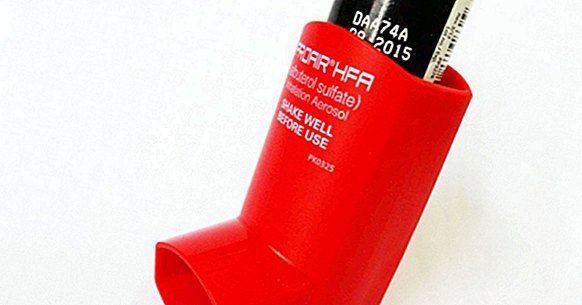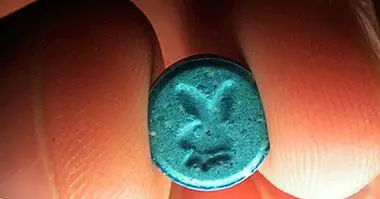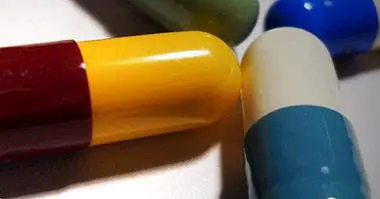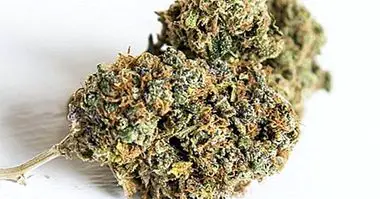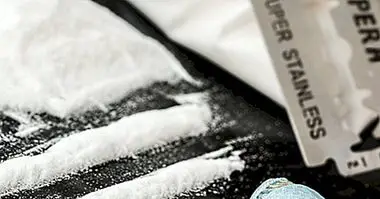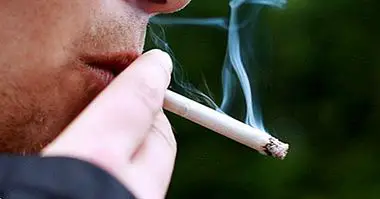Inhalant drugs: types, effects and symptoms of poisoning
Airborne consumption of chemicals such as glues and aerosols is relatively common among adolescents of low socioeconomic status, and can be very harmful.
In this article we will see what inhaling drugs are, what types are there and what are the symptoms and the risks of intoxication and the abusive consumption of these substances.
- Related article: "Types of drugs: know their characteristics and effects"
What are inhaling drugs?
We talk about inhalant drugs to refer to a series of chemical compounds with commercial or industrial uses (such as gasoline, glues or solvents) that sometimes they are aspirated because their consumption has psychoactive effects related to its depressant activity on the central nervous system.
Although they are usually not related to addiction and pharmacological dependence, inhaling drugs can be very harmful for those who abuse them, even if it is in a timely manner: excessive doses can cause death, and Chronic consumption is related to physical injuries and permanent psychological disorders.
The consumption of inhalant drugs is more common in adolescents (especially between 9 and 15 years old) of low socioeconomic status. Often these young people inhale the products as a group, and they are chosen because of their low price and the ease of access to them in comparison with other psychoactive substances.
These products are consumed by various methods that depend on their physical characteristics: inhaling them inside a bag, wet rags and vacuuming them through the nose and mouth, spraying them directly on these routes (as in the case of aerosols), etc.
- Maybe you're interested: "The 16 most addictive drugs in the world"
Symptoms of poisoning
The consumption of inhalant drugs has depressant effects in the central nervous system; this is why its symptoms and signs are similar to those that characterize substances such as alcohol, opiates or drugs of the anxiolytic class , sedatives and hypnotics, among which we find benzodiazepines and barbiturates.
Thus, according to the DSM can be considered that a person has been intoxicated with inhalants when contact with these substances causes psychological changes (for example aggressiveness, decreased motivation, impaired judgment, deficits in social interaction and decline in academic performance or labor) and at least two of the following signs :
- Dizziness, vertigo and balance disorders
- Uncontrollable and repetitive movements of the eyes (nystagmus)
- Coordination problems of the motor
- Alterations in speech articulation
- Unstable March
- Fatigue, fatigue , drowsiness and lethargy
- Impairment of reflex movements
- Psychomotor retardation
- Tremors
- Muscular weakness widespread
- Blurred or double vision (diplopia)
- Decrease in the level of consciousness until you reach stupor and even coma
- Feelings of euphoria
Other possible symptoms of intoxication are perceptual alterations and hallucinations in visual, auditory or tactile modalities, delusional ideas, the presence of intense anxiety and distortions in the perception of time. When the central nervous system depression is very intense Death can occur due to cardiac or respiratory arrest .
In addition, the abuse of inhaled drugs favors the appearance of psychological disorders such as depression, anxiety disorders or acute psychosis. In the long term there may be a chronification of the cognitive alterations that we have mentioned, as well as permanent injuries in the central and peripheral nervous system , in the liver or in the kidneys.
However, inhaling drugs have a very low addictive potential. The cases in which the criteria for the diagnosis of pharmacological dependence are met are scarce and no true withdrawal syndrome has been identified (the main factor that determines addiction) associated with the interruption of the consumption of this type of substances.
Types of volatile substances
There are many commercial and industrial products that are likely to be used as inhalants. Although the reinforcing effects of all of them are similar, framed in the category of depressant substances, they differ in their profile of side effects and in the possible physical and psychological sequelae that are associated with their consumption.
1. Methyl alcohol (methanol)
Methyl alcohol is a chemical compound that is used to make products such as glues, antifreeze and solvents. It is also about alcohol with a simpler structure.Methanol abuse is associated with the appearance of physical weakness, headaches and blindness between 6 and 30 hours after consumption, and can cause death.
2. Ketones
The most important inhalant in this class is acetone or propanone, which is used as a component of plastics, solvents, glues, glues, degreasers, medicines ... Its consumption causes a characteristic and severe irritation of the skin, mucous membranes and eyes; this phenomenon has been called "inhaler syndrome" .
3. Esters
Esters, such as ethyl acetate or ethanoate (used primarily as a solvent), have effects similar to those of acetone: they very often cause irritation typical of inhaler syndrome, although not as severe as in the case previous.
4. Anesthetics
The anesthetic that is most commonly used as an inhaled drug is trichlorethylene or TCE, which also serves to make solvents, degreasers and stain removers, among other products. Trichlorethylene can cause permanent lesions in the liver , in the kidneys and nerves , especially in the cranial and, more particularly, the optician.
5. Aliphatic hydrocarbons
Aliphatic hydrocarbons such as hexane are found in gasoline, in solvents, and in glues and glues. The abuse of these potential inhalants causes anemia, weakness and atrophy in the muscles, sensory deficits (mainly in tactile perception) and structural deterioration of the nervous system.
6. Aromatic hydrocarbons
Among this type of hydrocarbons it is worth mentioning Toluene, component of gasoline, glues, solvents and degreasers. In this case the symptoms of severe poisoning include nausea, pain in the stomach, lack of appetite, tremors, obtundation of consciousness, jaundice and permanent damage to the liver, kidneys and nervous system.

